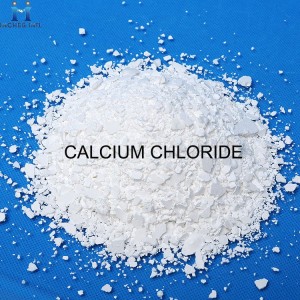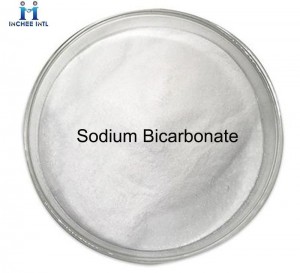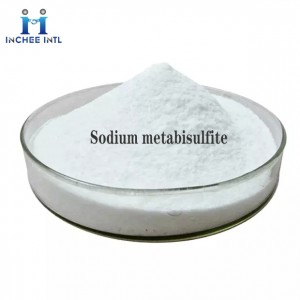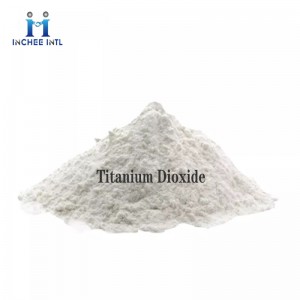-

Manufacturer Good Price CALCIUM CHLORIDE CAS: 10043-52-4
Calcium Chloride (CaCl2) is a water soluble ionic crystal with a high enthalpy change of solution. It is majorly derived from limestone and is a by-product of the Solvay process. It is an anhydrous salt that has a hygroscopic nature and can be used as a desiccant.
Chemical Properties:Calcium chloride, CaC12, is colorless deliquescent solid that is soluble in water and ethanol. It is formed from the reaction of calcium carbonate and hydrochloric acid or calcium hydroxide and ammonium chloride. It is used in medicine, as an antifreeze, and as a coagulant.
Synonym:PELADOW(R) SNOW AND ICE MELT;Calcium chloride,aqueous solution;Calcium chloride,medicinal;Additive Screening Solution 21/Fluka kit no 78374, Calcium chloride solution;calcium chloride anhydrus for technical;calcium chloride anhydrous for food;CACL2 (CALCIUM CHLORIDE);CalciuM chloride, 96%, for biocheMistry, anhydrous
CAS: 10043-52-4
EC No.:233-140-8
-

Manufacturer Good Price FORMIC ACID 85% CAS: 64-18-6
Formic acid is a clear, colorless liquid with a pungent odor. Formic acid was first isolated from certain ants and was named after the Latin formica, meaning ant. It is made by the action of sulfuric acid on sodium formate, which is produced from carbon monoxide and sodium hydroxide. It is also produced as a by-product in the manufacture of other chemicals such as acetic acid.
It can be anticipated that use of formic acid will continuously increase as it replaces inorganic acids and has a potential role in new energy technology. Formic acid toxicity is of a special interest as the acid is the toxic metabolite of methanol.Properties:FORMIC ACID is a colorless liquid with a pungent odor. It is a stable corrosive, combustible, and hygroscopic chemical substance. It is incompatible with H2SO4, strong caustics, furfuryl alcohol, hydrogen peroxide, strong oxidisers, and bases and reacts with strong explosion on contact with oxidising agents.
Due to the −CHO group, Formic acid imparts some of the character of an aldehyde. It can form salt and ester; can react with amine to form amide and to form ester by addition reaction with unsaturated hydrocarbon addition. It can reduce the silver ammonia solution to produce a silver mirror, and make the potassium permanganate solution fade, which can be used for the qualitative identification of formic acid.
As a carboxylic acid, formic acid shares most of the same chemical properties in reacting with alkalis to form water soluble formate. But formic acid is not a typical carboxylic acid as it can react with alkenes to form formate esters.Synonyms:Acide formique;acideformique;acideformique(french);Acido formico;acidoformico;Add-F;Kwas metaniowy;kwasmetaniowy
CAS: 64-18-6
EC No.: 200-579-1
-

Manufacturer Good Price Sodium Bicarbonate CAS: 144-55-8
Sodium bicarbonate, which is the compound commonly called baking soda, exists as a white, odorless, crystalline solid. It occurs naturally as the mineral nahcolite, which derives its name from its chemical formula by replacing the “3” in NaHCO3 with the ending “lite.” The world’s main source of nahcolite is the Piceance Creek Basin in western Colorado, which is part of the larger Green River formation. Sodium bicarbonate is extracted using solution mining by pumping hot water through injection wells to dissolve the nahcolite from the Eocene beds where it occurs 1,500 to 2,000 feet below the surface. The dissolved sodium bicarbonate is pumped to the surface where it is treated to recover NaHCO3 from solution. Sodium bicarbonate can also be produced from the trona deposits, which is a source of sodium carbonates (see Sodium Carbonate).
Chemical Properties:Sodium bicarbonate, NaHC03, also known as sodium acid carbonate and baking soda, is a white water-soluble crystalline solid.It has an alkaline taste, loses carbon dioxide at 270°C (518 °F).and is used in food preparation. Sodium bicarbonate also finds use as a medicine,a butter preservative, in ceramics,and to prevent timber mold.
Synonym:Sodium bicarbonate, GR,≥99.8%;Sodium bicarbonate, AR,≥99.8%;Sodium bicarbonate standard solution;Natrium Bicarbonate;SODIUM BICARBONATE PWD;Sodium bicarbonate test solution(ChP);Sodium bicarbonate Manufacturer;TSQN
CAS: 144-55-8
EC No.:205-633-8
-

Manufacturer Good Price Sodium metabisulfite CAS:7681-57-4
Sodium metabisulfite : (industrial grade) Sodium metabisulfite (chemical formula: Na2S2O5) appears as a white crystalline or powder solid with a slight sulfur odor. It is toxic upon inhalation and can strongly irritate skin and tissue. It can be decomposed to release toxic oxide fumes of sulfur and sodium upon high temperature. It can be mixed with water to form a corrosive acid. It is generally used as disinfectant, antioxidant, and preservative agent as well as a laboratory reagent. As a kind of food additive, it can be used as a preservative and antioxidant in food. It can also be applied to the wine and beer making. Moreover, it can be used to sanitize the equipment of homebrew and winemaking as a cleaning agent. It also have various kinds of other applications, e.g. being applied to photography, as an excipients in some tablets, for water treatment, as a source of SO2 in wine, as a bactericide and as a bleaching reagent as well as reducing agent. It can be manufactured through the evaporation of a sodium bisulfite which has been saturated with sulfur dioxide. It should be warned that sodium metabisulfite has certain acute effects on the respiratory system, eyes and skin. In severe case, it can cause breathing difficulty and even pulmonary damage which finally leads to death. Therefore, effective protective measures and attention should be taken during the operation.
Sodium metabisulfite CAS 7681-57-4
Product Name: Sodium metabisulfiteCAS: 7681-57-4
-

Manufacturer Good Price Titanium Dioxide CAS:1317-80-2
Titanium dioxide (or TIO2) is the most widely used white pigment in the industry, which is used in construction, industrial and automobile coatings; furniture, electrical appliances, plastic bands and plastic boxes are used; As well as special products such as ink, rubber, leather and elastic body.
Edible titanium dioxide, referred to as white pigment, non -toxic and tasteless. Flour, beverages, meatballs, fish balls, aquatic products, candy, capsule, jelly, ginger, tablets, lipstick, toothpaste, children’s toys, pet food and other white foods.
Titanium Dioxide CAS:1317-80-2
Product Name: Titanium Dioxide
Specification series: Titanium Dioxide R996; Titanium Dioxide R218; Titanium Dioxide TR92;Titanium Dioxide R908CAS: 1317-80-2
-

Manufacturer Good Price Glycine Food grade CAS:56-40-6
Glycine :White monocrystalline or hexagonal crystals, or crystalline powder. No odor, special sweetness. It can relax the acid and alkali flavor, cover the bitterness of adding sugar to the food, and enhance the sweetness. Relatively dense 1.1607 melting point 248 ° C (generating gas and decomposition). It is a simple structure in the amino acid series and the unnecessary human body. It has acidic and alkaline functional groups in the molecule. It is a strong electrolyte in the aqueous solution. , Easy to dissolve in water, dissolved in water: 25g/100ml at 25 ° C; 67.2g/100ml at 50 ° C. 25 ° C). Extremely difficult to dissolve in ethanol (0.06g/100g water -free ethanol). Almost insoluble in solvents such as acetone and ether. React with hydrochloride to generate salt hydrochloride.
Glycine food grade CAS: 56-40-6
Product Name: Glycine food gradeCAS: 56-40-6






